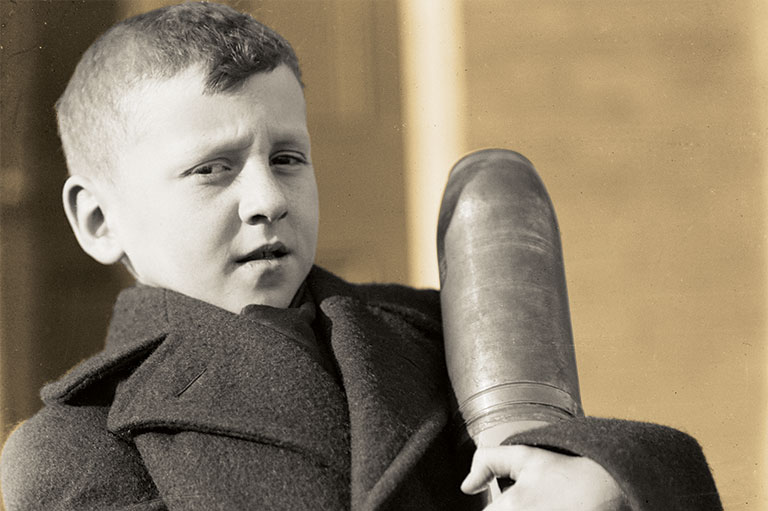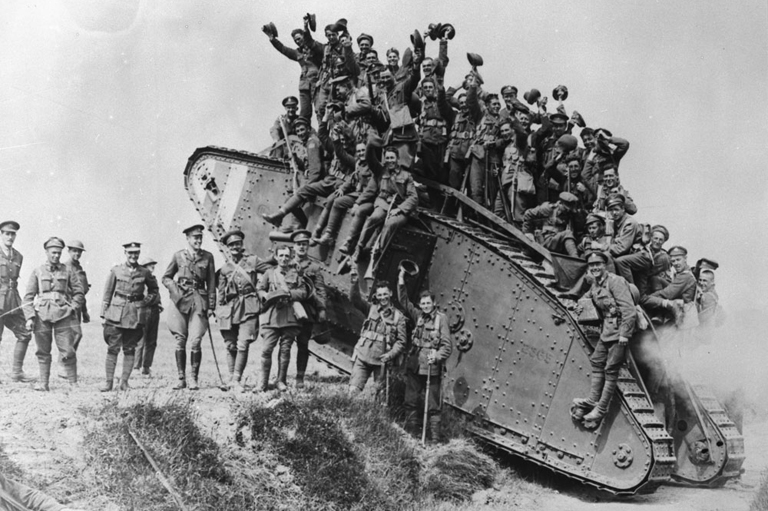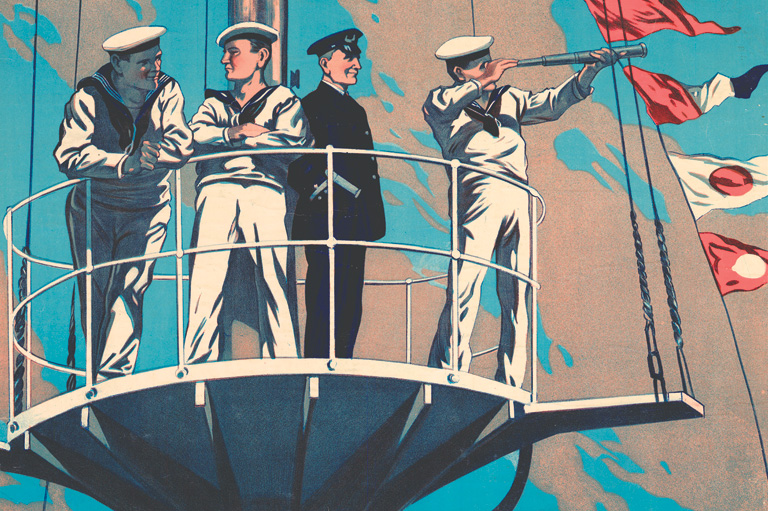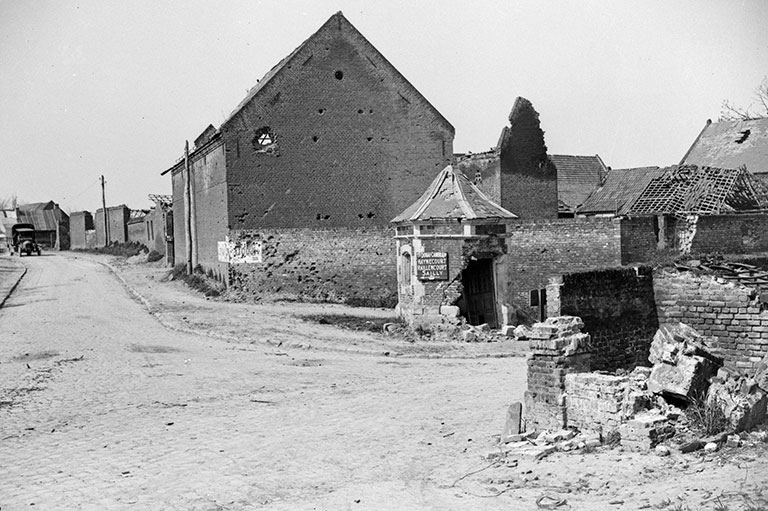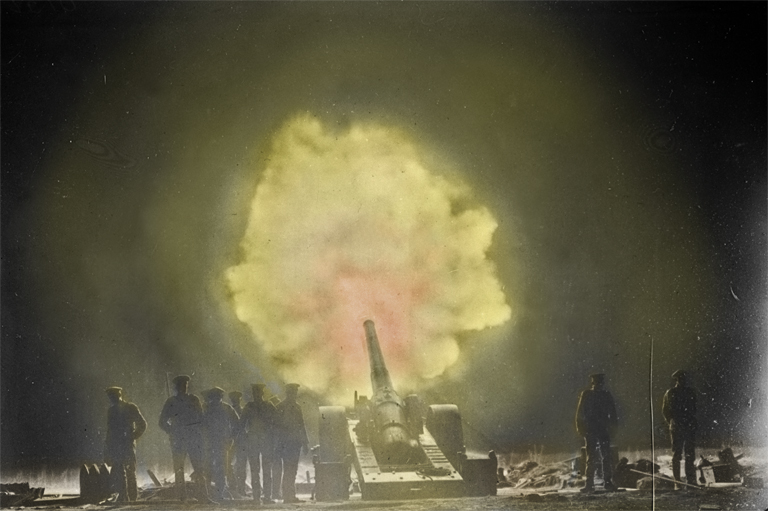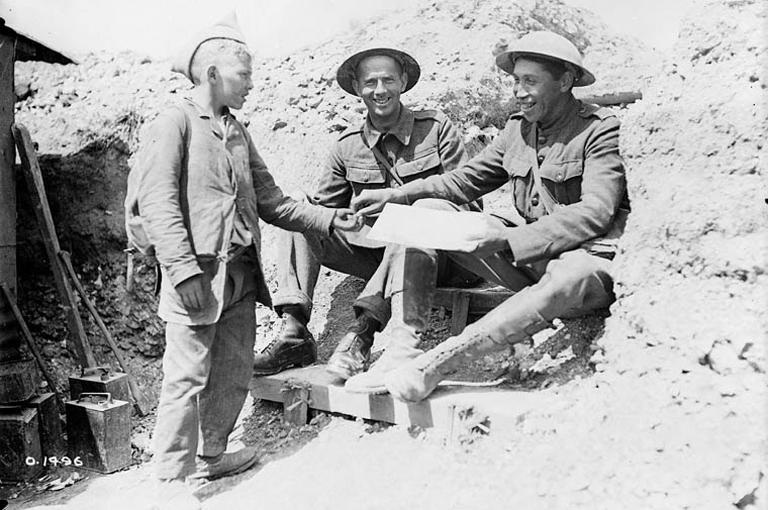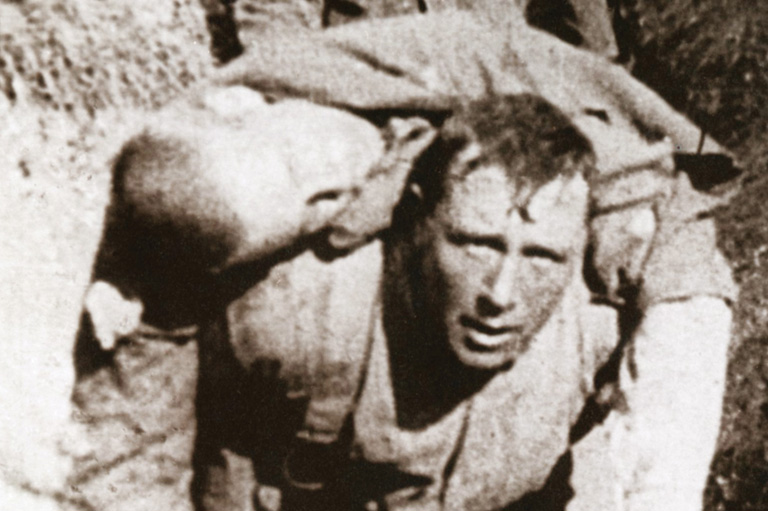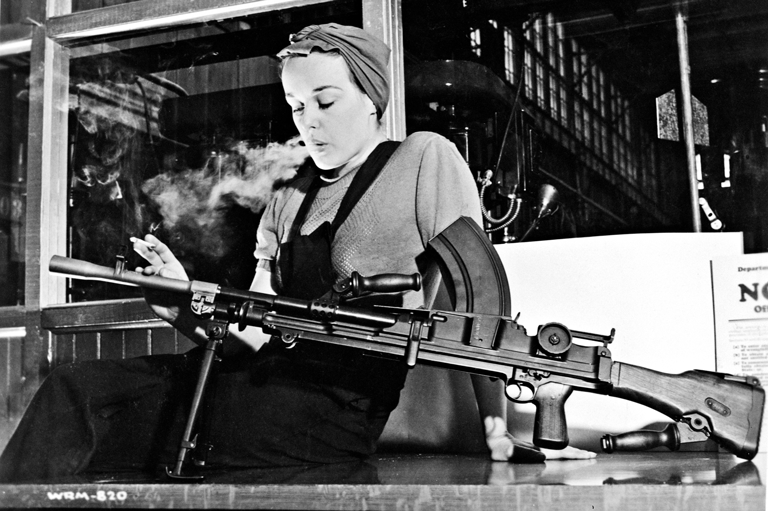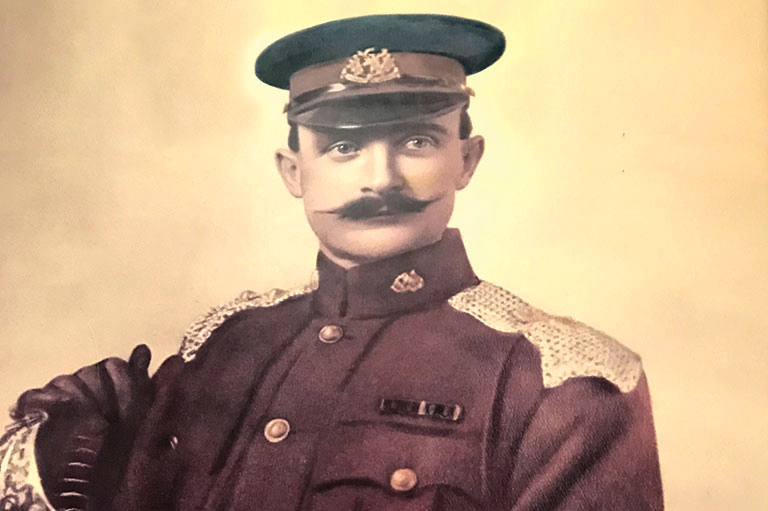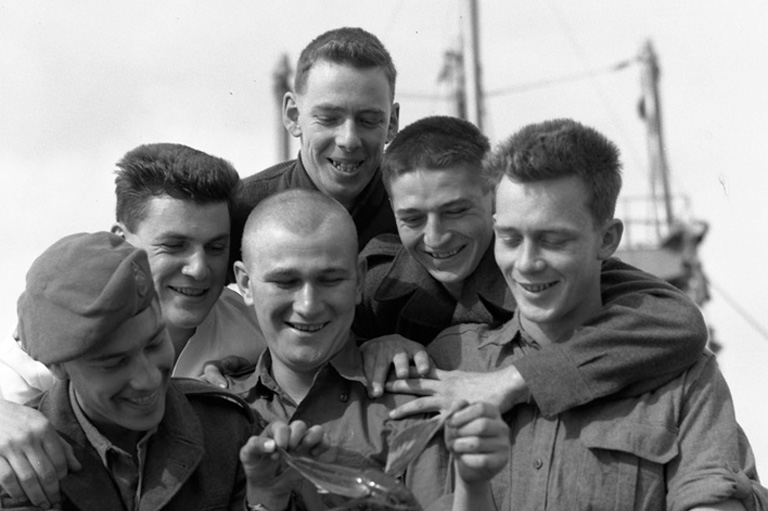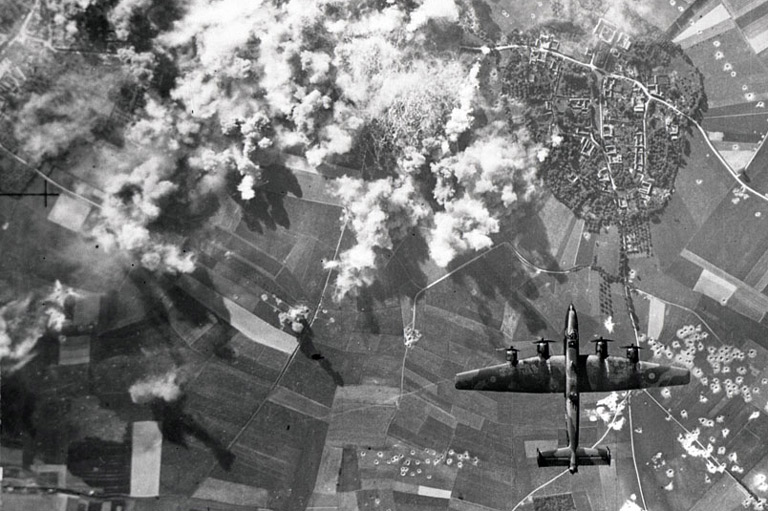Grey War, No More
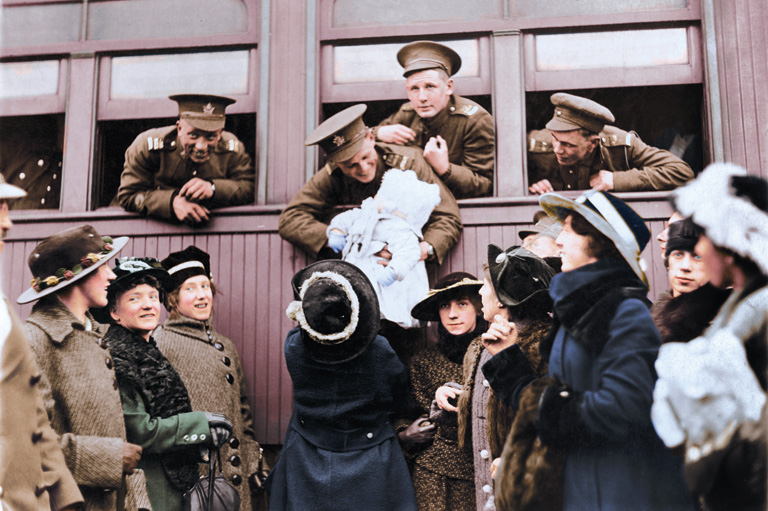
To commemorate the 100th anniversary of the end of the Great War, the Vimy Foundation is introducing Canadians to a new way of viewing Canada’s First World War contributions: in colour.
They Fought in Colour: A New Look at Canada’s First World War Effort will be available on October 6. The Great War was traditionally documented using black-and-white photography. The book’s colourized images help to transform our understanding of the war, as well as the contributions of Canadians on the home front.

Witnessing the hues of young, flushed faces, the tints of the uniforms, and the tans and browns of the muddy, blasted battlefields, readers are brought emotionally closer to the experiences of the Great War generation.
The book’s ten chapters depict images of war preparation, medicine, life behind the lines, the home front, as well as the return home to Canada.
The images, colourized by Mark Truelove, are complemented by essays by well-known Canadians such as Margaret Atwood, Hugh Brewster, Stephen Brunt, Tim Cook, Charlotte Gray, Rick Hansen, Serge Joyal, R.H. Thomson, Lee Windsor, and Timothy C. Winegard.
They Fought in Colour also includes a foreward by Pierre Berton Award winner Paul Gross, and an afterword by Peter Mansbridge.
Canada’s History spoke recently about the project with Jeremy Diamond, executive director of the Vimy Foundation, and image colourization specialist Mark Truelove.

The title They Fought in Colour vividly reminds us that the world of the Great War was suffused with colour. What impact does colourizing black-and-white images have on readers today?
Jeremy Diamond [JD]: Colour makes the images, and the people in them, feel familiar. The people in these colourized photos don’t seem like an ancient generation but rather as the young people that they were, thrust into a foreign experience. It makes the soldier in the muddy trenches, the nurse in the field hospital, and those who waited for them at home, raising money to support the war effort, come alive. Immediately, their expressions, mannerisms, and feelings are familiar.
It is incredibly impactful to look at these historic photos in a new way and to see both how similar and how different their lives are to our own lives today. The colour versions make them feel current. Suddenly these photos of war-torn Western Europe and those in the newspapers today don’t look that different.

Mark Truelove [MT]: Most of the feedback that I get is from people telling me that the added colour has brought the photo to life and made it easier to relate to the people in the photo. It bridges the gap between now and then and helps to personalize the photos. The people in the photos become more lifelike — more like you and me!
What was the inspiration behind the decision to colourize the photographs?
JD: Our world nowadays is very connected through imagery — the amazing cameras on our smart phones, the photos we share through social networks like Instagram and Snapchat. The Vimy Foundation works predominantly with young people, and we are always looking for interesting ways to help them connect more strongly with Canada’s First World War history.
Black-and-white photos tend to feel like the ancient past — one hundred years might as well be one thousand years. But seeing the same photos in colour helps us to see the war as it was experienced by those who lived it and helps us connect to our history in a way that is more challenging to do with photos in their original form.

Mark, how did you first become interested in colourizing photographs?
MT: I first became interested in colouring photos when I was researching my family history. I had lots of black-and-white photographs and I saw a photo that someone had colourized online, and I wanted to do that to all of my family photos! So I taught myself how to do it, and it all went from there.

Describe the research process that goes into preparing to colourize a black and white photo.
MT: Some photos are easy to research, and some can be a bit of guesswork. There are great online resources for the colours of uniforms, medals, and advertisements. I often use old postcards for the colours of buildings, landmarks, and specific storefronts. The Vimy Foundation put me in contact with Caitlin Bailey, the curator at the Canadian Centre for the Great War, who answered some of the tougher uniform questions that I had.

Jeremy, what types of surprises emerged as you began to receive the colourized images?
JD: Each time a new colourized image arrived from Mark, we crowded around a computer screen, completely transfixed by the impact of the colour. It was always the photos with the faces that jumped out the most. We also started to notice that the faces in the photos looked like the faces of today. In some cases, even the haircuts were similar. This bridged the gap between past and present.

Each chapter deals with a different aspect of the war. How did you decide upon the themes, and how difficult was it in deciding who was the best writer to tell each story?
JD: We wanted to tell the story of Canada’s role in the First World War from different perspectives, as the war itself was experienced from different ones. The various themes also allow the book to connect to different audiences — including those not necessarily interested in the traditional battlefield narrative.
We were fortunate to have so many wonderful Canadians interested in contributing to the book. In some cases, we wanted a sportswriter to write about sports — as in the case of Stephen Brunt — but in other cases a unique voice, such as R.H. Thomson commenting on how soldiers were received when they returned, was also very valuable. The writers bring their own perspectives to their topics, teaching something new to the readers.

Describe the selection process that went into choosing the images.
JD: Our project started with the most iconic photos from the First World War — the soldiers celebrating in the trucks after the victory at Vimy Ridge and walking through the mud of Passchendaele.
We wanted to tell more of the story beyond the battle scenes, so it was important to include photos from all points of the war, a cross-section of what those four-plus years were like: some of the sporting events taking place behind the front lines, women working in factories in Canada, fundraising drives across the country, the work of nurses and doctors, training exercises, and the soldiers coming home.
To do so we pored over the official war photographs now held by Library and Archives Canada but also looked through images from many smaller archives. Some photos jumped out immediately. The hard part was to cap it at 150 photos!
Mark, how challenging is it to ensure that your colourizations accurately reflect reality?
MT: It depends on the photo. It is a constant learning process for me to try to get the photo to look as real as possible. For most photos, with good research, they can be a good reflection of reality.

The book goes beyond the battlefield to tell the stories of other aspects of soldiers’ lives, as well as the stories of those on the home front. Why was it important to move “beyond the trenches” in terms of the stories being told?
JD: We talk about this war as the Great War because it really did touch the lives of every person in Canada. Every community from coast to coast was impacted. It was critical for us to capture some of these changes — nursing sisters voting overseas, women working in munitions factories, the sheer numbers of soldiers lined up during recruitment, even the sports stars! It was also important for us to show some of the stories of the soldiers away from the front lines.
By featuring some of the more lighthearted moments of the First World War — the sports and games that took place, the holidays that were observed, and the meals that were shared — we hoped to present a different side of the war experience than the battle scenes that are typically shown.
Themes associated with this article
Advertisement
You might also like...
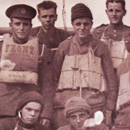
The war that changed Canada forever is reflected here in words and pictures.

Canada’s History Archive, featuring The Beaver, is now available for your browsing and searching pleasure!

